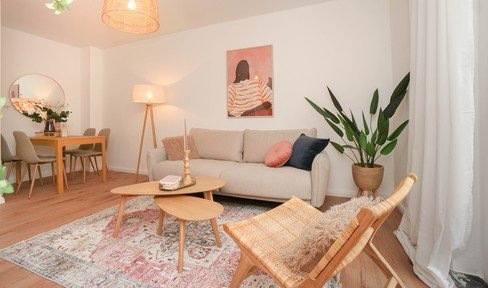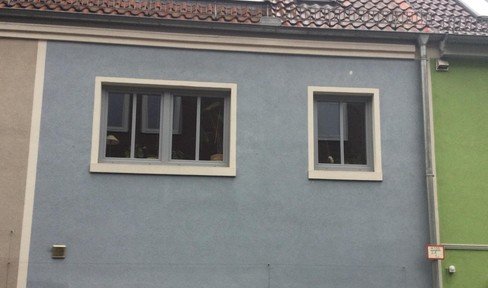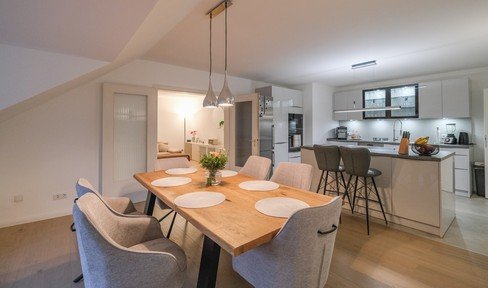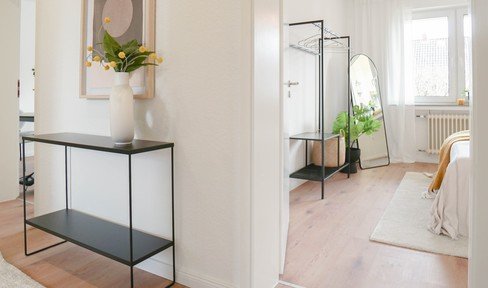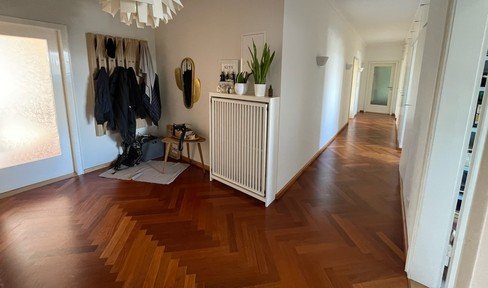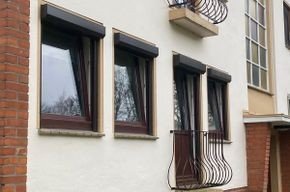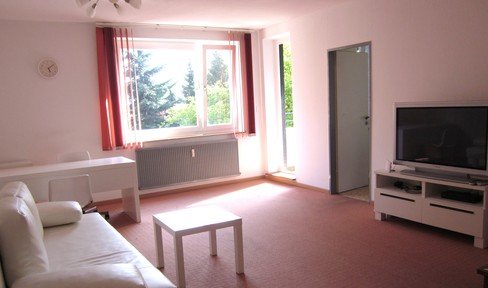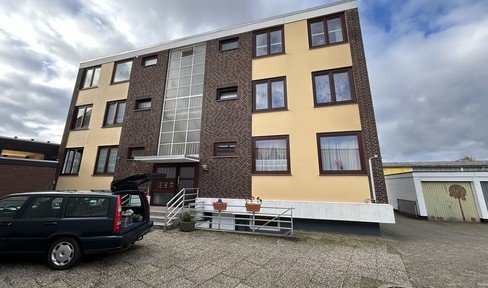- Properties
- Apartments for sale
- Bremen
- Bremen

This page was printed from:
https://www.ohne-makler.net/en/properties/apartment-buy/bremen/bremen/
Comission-free Apartments for sale in Bremen
Here you will find 12 offers for commission-free Apartments in Bremen and surroundings
Bremen's city center and eastern suburbs have become significantly more expensive
As in all other major German cities, prices for condominiums in Bremen have risen in recent years, in some cases exorbitantly, especially in central locations. In the tradition-steeped Hanseatic city on the Weser, this has particularly affected the Mitte district, including its districts and residential locations in the Altstadt, Schnoor and Stephaniviertel, Schlachte, Ostertor and Bahnhofsvorstadt, where apartments currently cost between around 2,500 and just under 4,000 euros/m². A similarly high price structure can also be found in the Handelshäfen district, formerly part of Mitte and since 2009 part of Walle, primarily due to the completely new Überseestadt residential quarter being built there. The old buildings in the Östliche Vorstadt district with the Steintor, Fesenfeld, Peterswerder and Hulsberg districts, some of which are still in their original condition and many of which have been extensively renovated, are also increasingly attracting the attention of potential buyers. The planned new residential area "Hulsberg-Quartier" on the site of the Bremen-Mitte Clinic on St.-Jürgen-Strasse, for example, is considered to be of high quality. On the southern bank of the Weser in the South district and in the districts of Neustadt, Obervieland, Huchting, Woltmershausen, Seehausen and Strom, apartments in the traditional "Bremen houses" are particularly sought-after; with purchase prices of around 2,900 euros/m², these are mainly in the southern suburb ("Philosophenviertel").It is alittle cheaper at around 2,600 euros/m² in nearby Huckelriede, where several new residential areas have been built around Lake Werder since 1999.
Many villas and old buildings in the northeast, high-rises and new construction in the southeast
Significantly higher prices of between 3,000 and just under 4,000 euros/m² are, however, payable in the villa district of Schwachhausen to the east of the center and in its districts of Neu-Schwachhausen, Bürgerpark, Barkhof, Riensberg, Radio Bremen, Schwachhausen and Gete; similar prices also determine the offers in the upscale district of Oberneuland. The neighboring district of Horn-Lehe to the north (Horn, Lehe, Lehesterdeich) is slightly less expensive, but also in high demand for housing due to the local university. On the former Telekom site near the Hollerland nature reserve, new residential, retail and commercial buildings are to be built on a 7-hectare site in the next few years. Moderate prices, on the other hand, can be found in Borgfeld on the northeastern edge of the city (Borgfeld-West development area). Large housing estates with many high-rise buildings from the 1960s and 1970s are located in the rather low-priced district of Osterholz and its districts Ellener Feld, Ellenerbrok-Schevemoor, Tenever, Osterholz and Blockdiek in the far east. The district of Vahr with its districts Gartenstadt Vahr, Neue Vahr Nord, Neue Vahr Südwest and Neue Vahr Südost is similarly dense and highly built-up, but somewhat greener. A well-balanced mixed area of residential, commercial and industrial areas is the district of Hemelingen with its districts of Sebaldsbrück, Hastedt, Hemelingen, Arbergen and Mahndorf in the very southeast of Bremen, where the largest employer in Bremen, the Daimler-Benz plant, opened in 1982, is located.
The expensive old town also appreciably upgrades its neighboring districts
Of the neighborhoods in the West district north of the Old Town, Walle (Überseestadt) and Findorff with its Regensburger Strasse, Findorff-Bürgerweide, Weidedamm and In den Hufen districts in particular have changed in recent years from simple neighborhoods to popular residential areas with rising purchase prices. Most market observers predict a similar development for the neighboring district of Gröpelingen to the northwest, with the districts of Lindenhof, Ohlenhof, In den Wischen and Oslebshausen; far-reaching redevelopment measures and the proximity to the city center have already brought the area more and more into the focus of real estate interest in recent years. The Blockland district on the northern edge of the city is much more sparsely populated and in many places still reminiscent of the village past. In the districts of Bavendamm, Wummensiede, Niederblockland, Oberblockland and Wasserhorst, people still live in the midst of green meadows and extensive agricultural areas. In the North district at the northwestern end of the city, there is still a lot of greenery and old buildings, for example in the Burglesum district, including the neighborhoods of Burg-Grambke, Werderland, Burgdamm, Lesum and St. Magnus; in the latter two residential areas, sophisticated new housing developments have also been built. In Vegesack (Grohn, Schönebeck, Aumund-Hammersbeck), leisure and shopping facilities such as the Vegesack harbor, the Schönebeck moated castle, and the Hammersbecker Wiesen and Beckedorfer Beeke nature reserves dominate the picture. Blumenthal in the far northwest with Rekum, Farge, Lüssum-Bockhorn and Rönnebeck once suffered greatly from the shipyard crisis, but has recovered sustainably economically thanks to new infrastructure facilities.
Shorts facts Buy apartments in Bremen at a glance:
- The Mitte district is now one of the most expensive areas in Bremen
- The district of Östliche Vorstadt is also highly sought-after because of its many old buildings
- There is also great demand in the Neustadt district south of the Weser River
- Schwachhausen, Oberneuland and Horn-Lehe are the most expensive neighborhoods in the east
- Osterholz, Vahr and Hemelingen still have affordable old new buildings
- Good forecasts for the new Überseehafen district in Walle
- The districts of Blockland and Burglesum in the north still have a rural character
Apartments for sale around Bremen
Properties to Rent in Bremen
Properties for Sale in Bremen
Diese Seite wurde ausgedruckt von:
https://www.ohne-makler.net/en/properties/apartment-buy/bremen/bremen/

